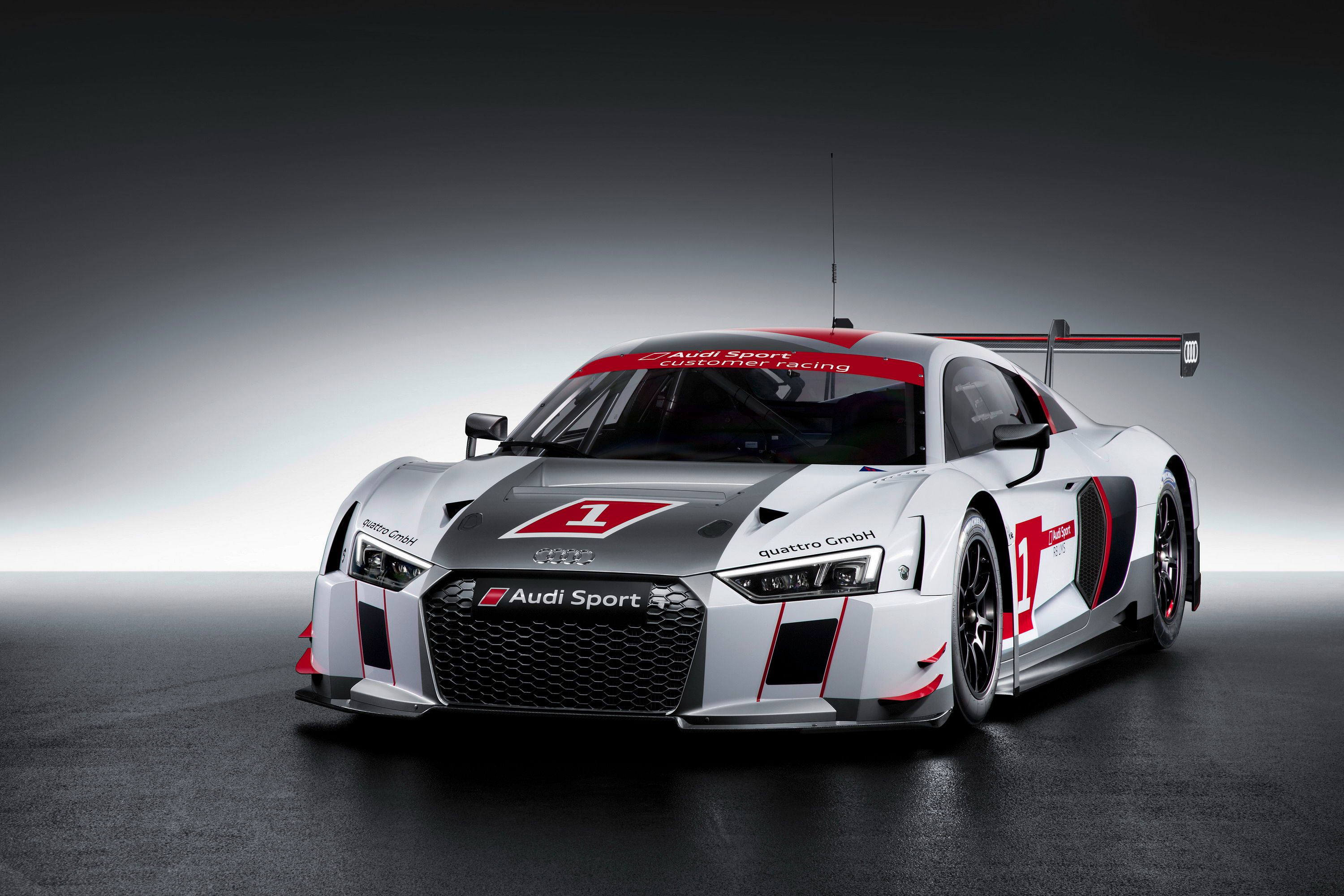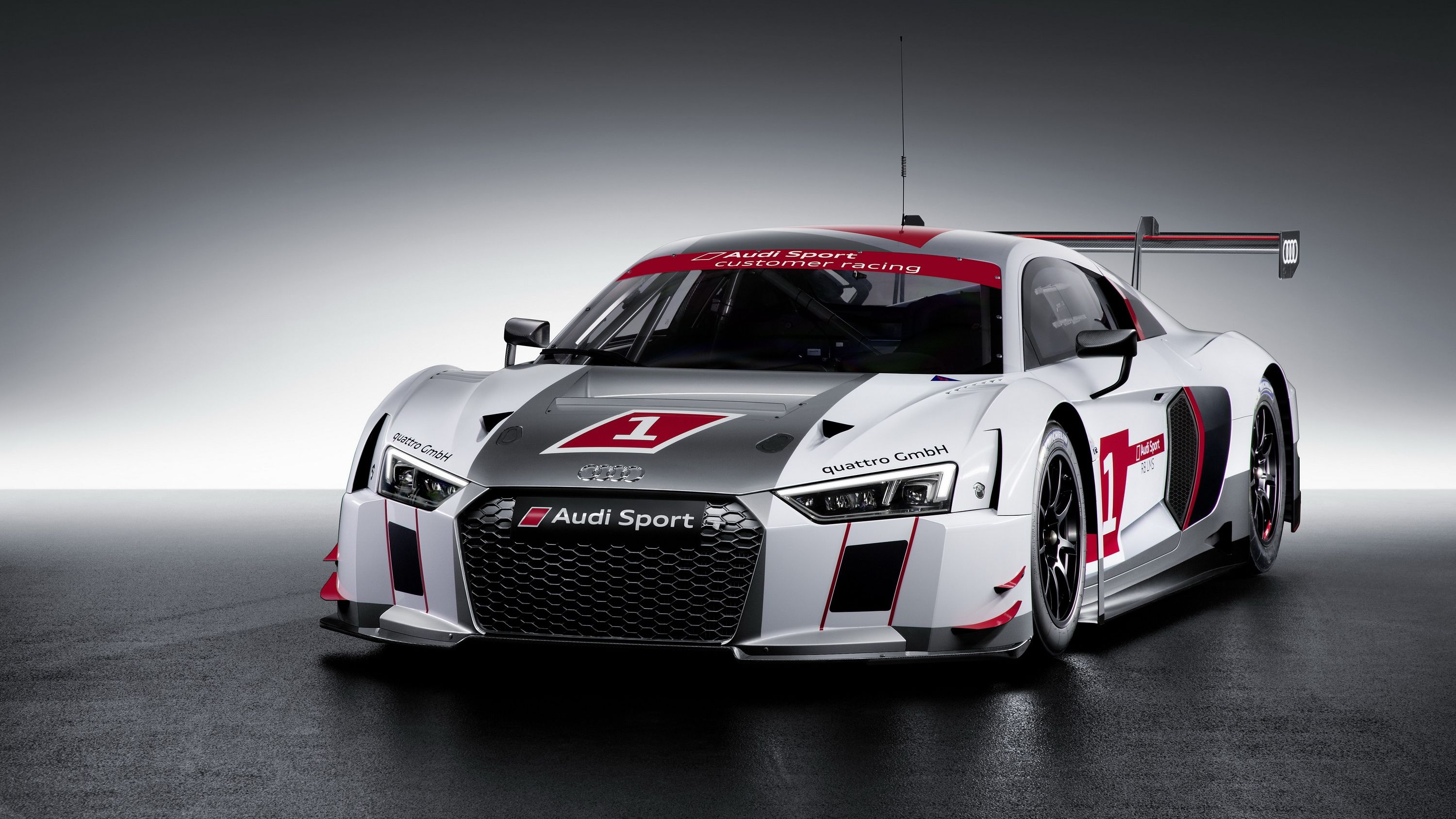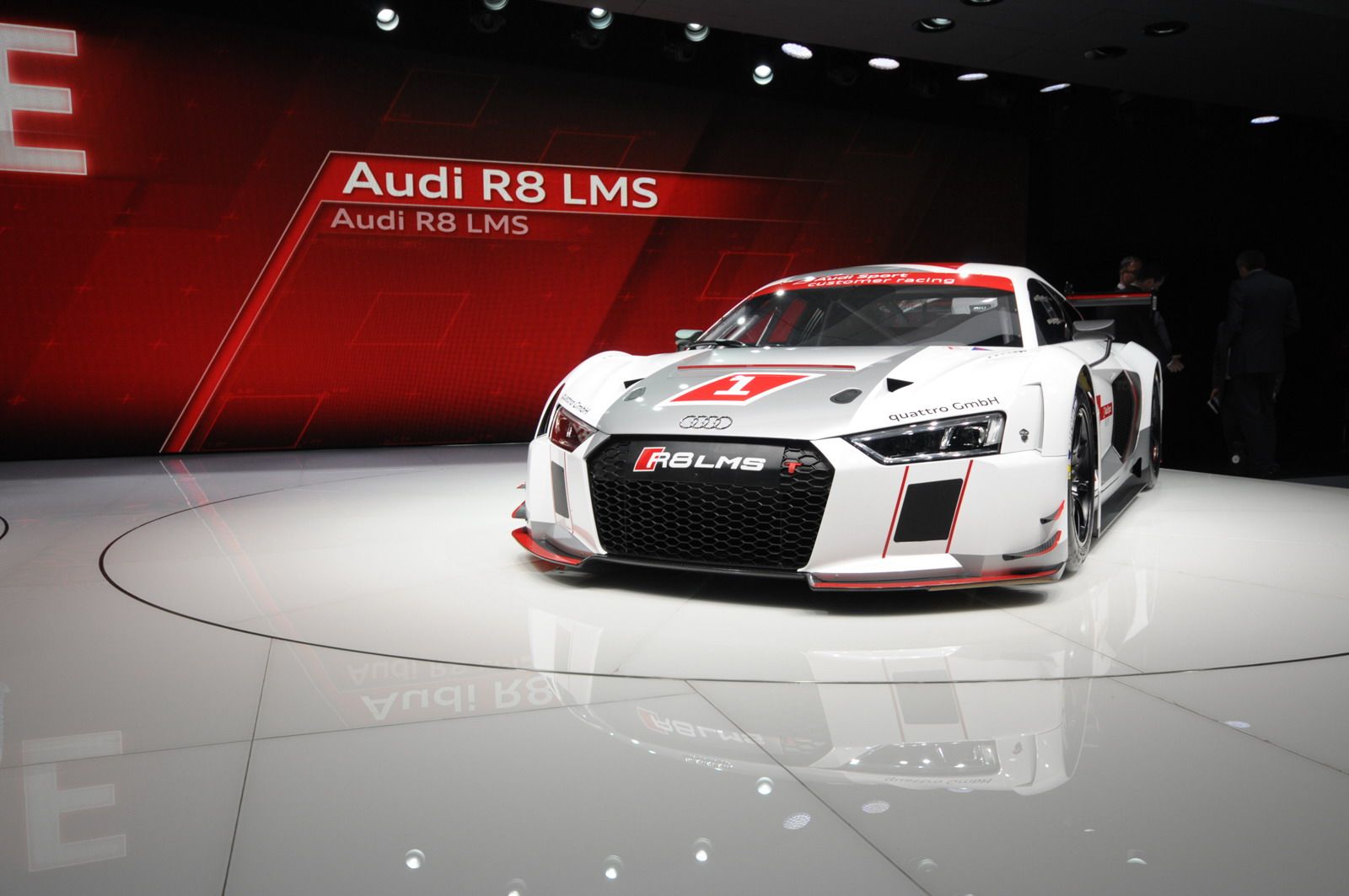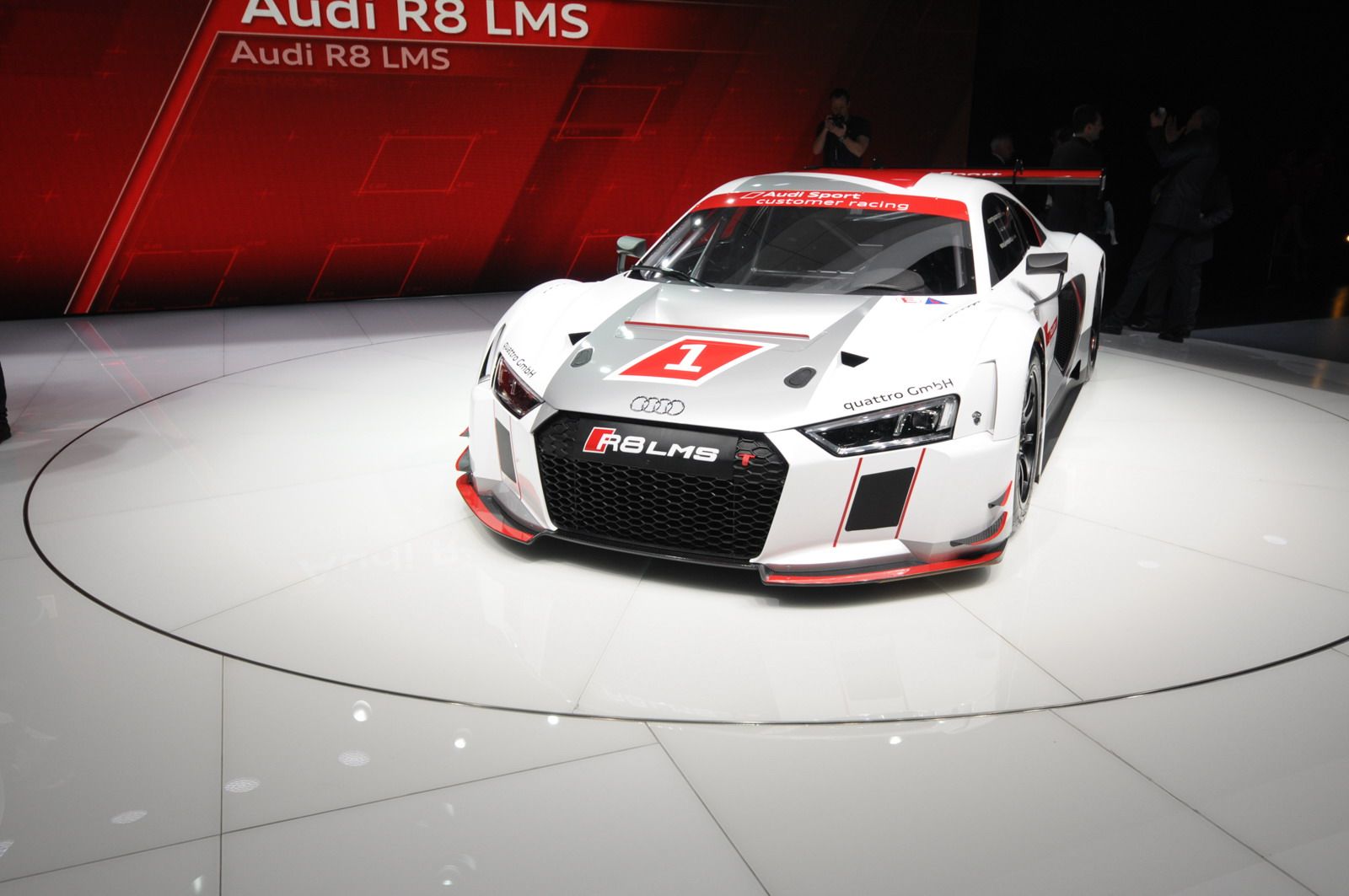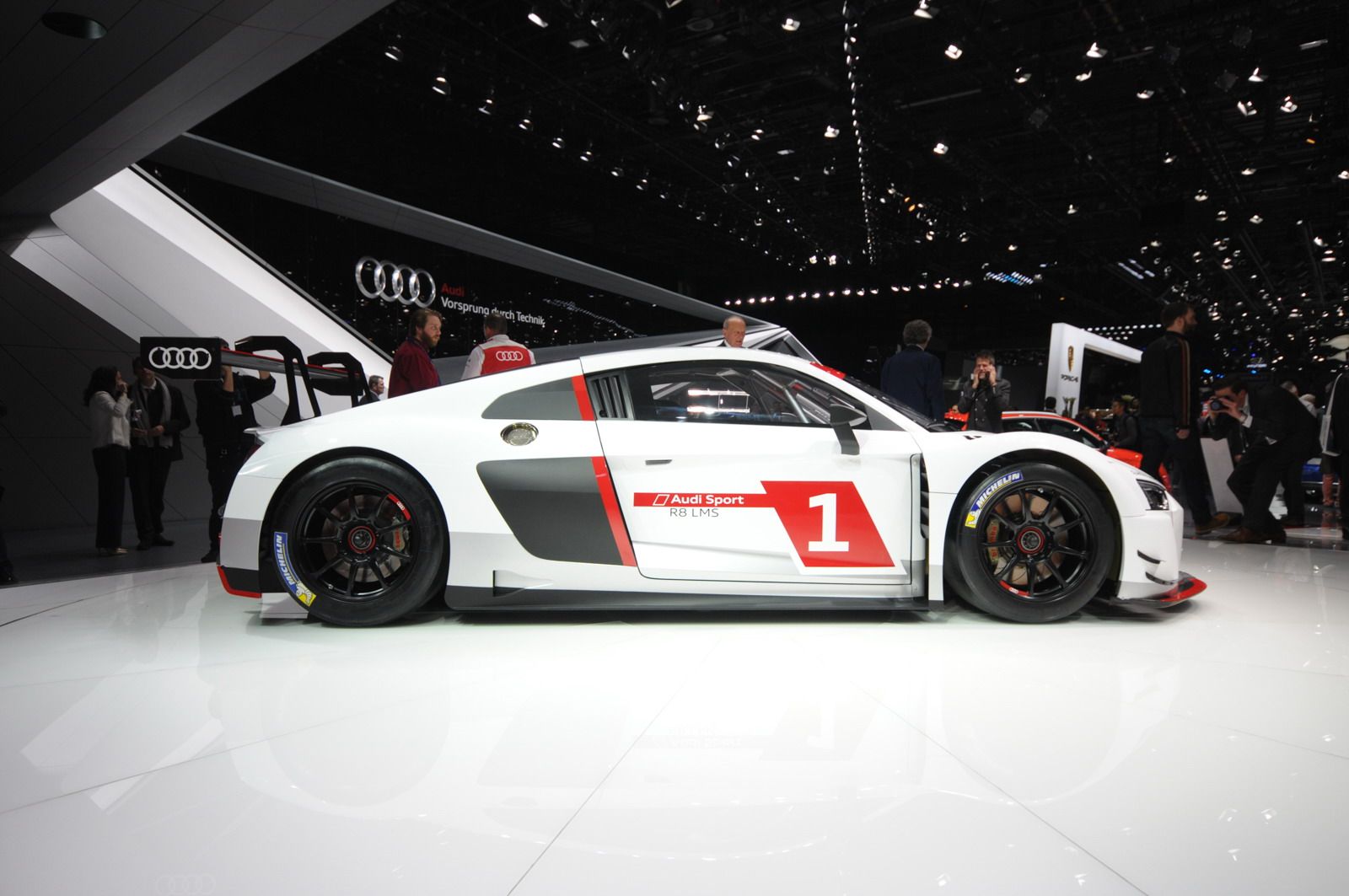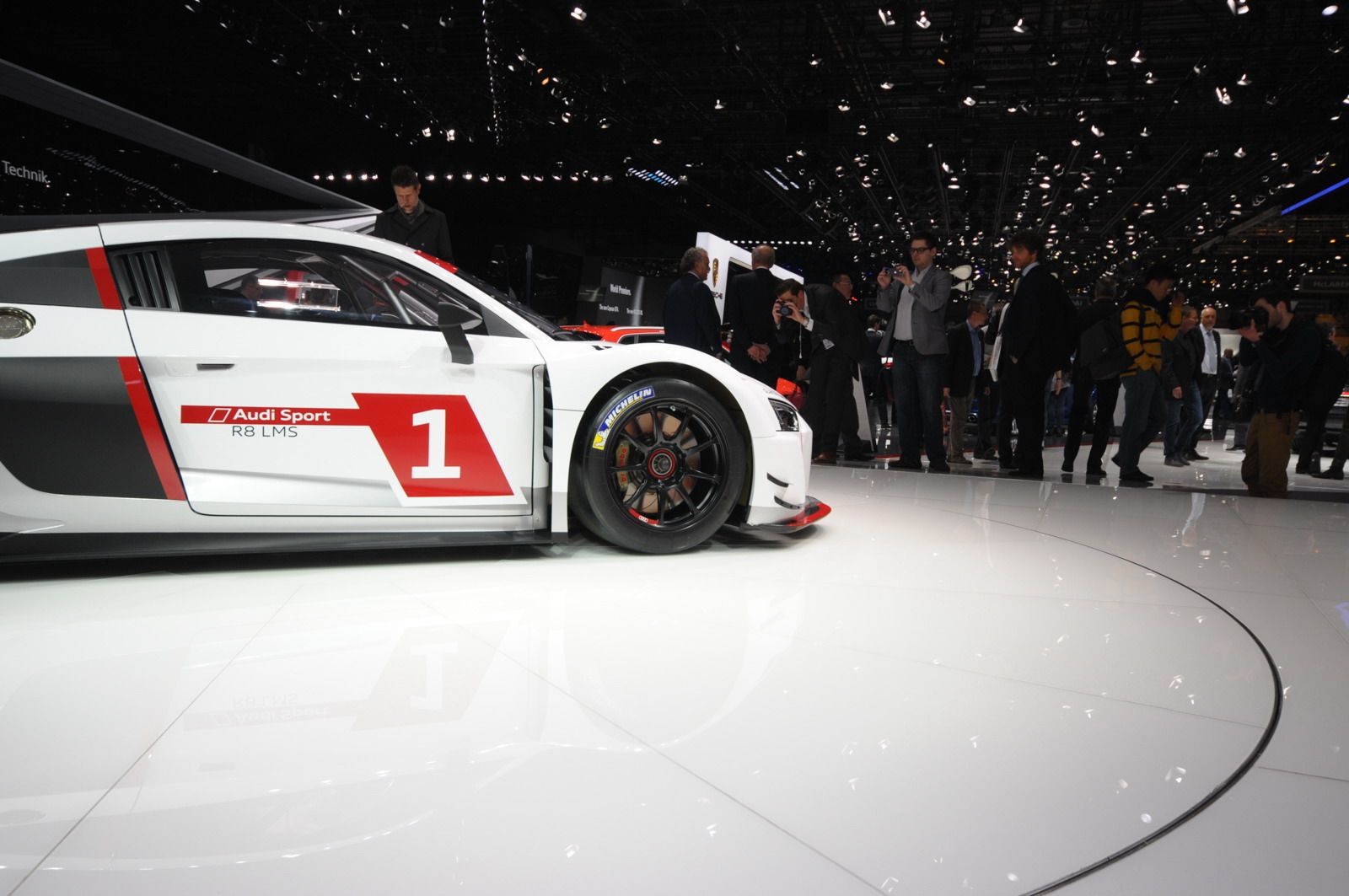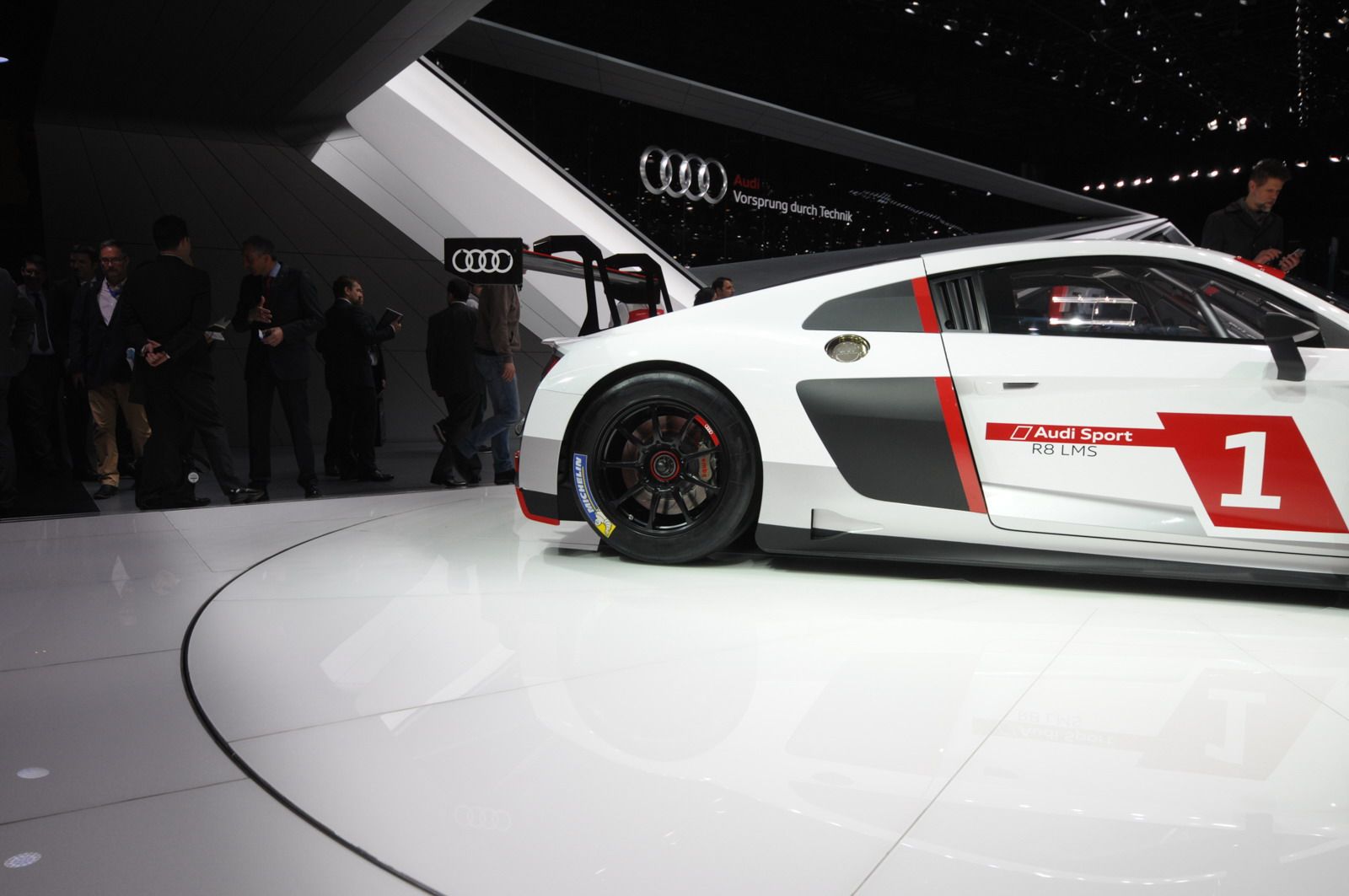After first entering the GT3 fray with the R8 LMS in 2009 and following it up with the slightly improved R8 LMS Plus a few years later, Audi is recommitting to its GT3 customer-racing program with the all-new 2016 R8 LMS. Based on the redesigned 2016 R8 road car, this thing looks positively ferocious.
Though GT3 cars are intended to be factory-supported customer race cars,->ke148 and are for the most part, the class has become the stage for a global proxy battle between an unprecedented number of major manufacturers. BMW,->ke178 Ferrari,->ke252 Bentley,->ke15 Aston Martin, Mercedes-AMG, Lexus, Porsche, Lamborghini, Nissan and McLaren are all major players, and most either recently introduced new GT3 cars or have new ones on the way.
Despite all that competition, the first-generation R8 LMS excelled in the class, collecting 26 GT3 Championship wins and 23 titles in other international classes. It won seven 24-hour races, including two wins in the torturous Nürburgring->ke999 24. With 130 cars sold to customer teams worldwide, it’s arguably the most successful and popular GT3 car in the world. So, the new one has a lot to live up to.
And we won’t have to wait long to see if it will. Entries during the 2015 season have already been confirmed for the Nürburgring 24 in May and the 24 Hours of Spa-Francorchamps in July, with more likely to come. We can also expect to see it racing on our shores, possibly in the Pirelli World Challenge series and in the Tudor United SportsCar Championship after the GTD class fully embraces the FIA’s global GT3 specifications in 2016.
Updated 09/09/2015: The new Audi R8 LMS can now be ordered by customers, and the first deliveries will be made by the end of the year. Audi’s GT3 sports car is priced at 359,000 euros (plus VAT) - $400,000 at the current exchange rates, with a starter and parts package increasing the total price up to 398,000 euros (plus VAT) - $444,000 at the current exchange rates.
Continue reading to learn more about the 2015 Audi R8 LMS.
audi-r8-lms
- Make: Array
- Model: audi-r8-lms
2015 Audi R8 LMS
- Make: Array
- Model: 2015 Audi R8 LMS
- Engine/Motor: V10
- Horsepower: 585
- Transmission: six-speed with paddle shifters
Exterior
I really like the evolutionary looks of the 2016 R8, but it transforms into an altogether more vicious machine when it puts on its war paint. The carbon-fiber-reinforced plastic bodywork contributes to a 55-pound reduction in weight for a total of 2,700 pounds. Similar to DTM cars, the wheel wells are now open aft of the wheels, helping to improve airflow. Airflow to the radiator has also improved thanks to a new nose with two pontoon-like protrusions and downforce-assisting upswept front canards on either side.
For the first time, the R8 LMS also has a fully lined underfloor that smoothly channels air out the back through a huge rear diffuser. This simultaneously gives the car more downforce and less drag, which has allowed engineers to reduce the size of the rear wing.
Overall, it has the beautiful brutality that only race cars seem to have. We can’t wait to watch it get splattered with unfortunate insects and caked in brake dust and tire clag at endurance races around the world this season.
Interior
This being a customer car, and Audi wanting to keep their customers in a state in which they can buy more Audis, driver safety has not been ignored. The R8 LMS now uses the same PS 1 Audi Protection Seat from the R18 e-tron quattro LMP1 car. It’s bolted directly to the chassis, and the steering wheel and pedal box are both adjustable to accommodate drivers of different heights during endurance races. Audi also added a rescue opening in the roof, similar to those used on DTM cars, which allows the driver’s helmet to be removed, lessening the risk of spinal column injury.
The steel roll cage fixed to the aluminum space frame chassis is both lighter and stronger than the old car’s cage, and has the added benefit of helping to improve torsional rigidity by 39 percent. Lest you think driver comfort has been ignored, Audi has also improved fresh air circulation in the cockpit. At 124 mph, drivers will be treated to a fresh breeze of 250 liters of air per second.
Drivetrain
The same 5.2-liter V-10 that’s at the heart of the R8 road car is used in the LMS. Remaining largely unchanged, it produces 585 horsepower and is easily serviceable — a crucial factor for privateer teams on a budget. Audi recommends rebuild intervals of about 12,500 miles. In addition to the engine, Audi says the LMS shares as many parts as possible with the road car to keep costs low and ease maintenance. The last LMS was built on the same assembly line as the road-going R8, and the same is probably also true for the new one.
Because the FIA doesn’t allow all-wheel drive in the GT3 class, the LMS will again transfer power exclusively to the rear wheels through a new six-speed electro-hydraulic gearbox with paddle shifters. New software manages engine electronics, traction control and gearshifts, while a new processor helps speed everything up. Interestingly, what Audi calls a “power box” replaces the traditional fuse box, and sounds like something that could eventually trickle down to Audi’s road cars.
Drivetrain Specifications
|
Type |
5.2 liters V-10 engine |
|
Output |
585 HP |
|
Transmission |
six-speed transmission with paddle shifters |
Prices
Audi’s GT3 sports car is priced at 359,000 euros (plus VAT) - $400,000 at the current exchange rates, with a starter and parts package increasing the total price up to 398,000 euros (plus VAT) - $444,000 at the current exchange rates.
Competition
Mercedes-AMG GT3
Competition is definitely something the R8 LMS will have plenty of. First up, and also unveiled at the 2015 Geneva Motor Show, is the Mercedes-AMG GT3. Based on the Mercedes-AMG GT road car, it’s a smaller, more tight-fisted replacement for the SLS GT3, which has also found plenty of success in GT3 racing. But instead of the road-going GT’s twin-turbo 4.0-liter V-8, the GT3 variant will use the big-displacement 6.3-liter atmospheric V-8 from the out-going SLS.
Mercedes hasn’t divulged a power figure, but we’re predicting the lighter AMG GT3 to produce around 500 horsepower after class regulations are factored in. Like the R8 LMS, it’s significantly wider than its street-legal counterpart and boasts some comprehensively overhauled bodywork. In fact, only the headlights, three-pointed star emblem and the overall hood shape are carried over from the road car. Going on past history, this could be the GT3 car to beat.
BMW M6 GT3
The significantly larger M6 seems like an odd starting point for BMW’s new GT3 racer, but here we are. Its replaces the much smaller Z4 GT3, which used a worked-over version the old M3’s 4.0-liter V-8 and also found its share of GT3 glory.
Like the M6 road car, the M6 GT3 uses the same twin-turbo 4.4-liter V8, though its 560 horsepower will likely have to be reined in to conform to class regulations. BMW has yet to release all of the official information on the M6 GT3, but it’s safe to say that, like its competition, it will sport radically altered bodywork, with wider fenders and a suitably massive rear wing.
Lexus RC F GT3
Lexus is the newcomer to the class. We’ve only seen a concept version of the RC F GT3 racer, but Lexus sounds very serious about getting it on the track. Back when it was introduced at the 2014 Geneva Motor Show, Lexus said it would begin delivering cars in 2015. To our knowledge, deliveries haven’t begun, but it’s early yet.
The RC F GT3 looks great both in the carbon fiber and on paper. In fact, we would love to see a bit of this aggression in the relatively benign RC F road car. The GT3 uses a race-tuned version of the 5.0-liter V-8 producing over 540 horsepower, and has all the flared fenders, splitters and wings you would expect to find on a GT3 racer.
Conclusion
Normally when a successful race series hits a critical mass of manufacturers, that’s exactly when some of those manufacturers begin to get cold feet and find somewhere else to go racing. Knock on wood, but this doesn’t seem to be happening with GT3. A big part of this success is that, unlike most racing programs, GT3 car sales actually make money for manufacturers. And when money is being made, it makes the risk of losing face on the track a bit easier to swallow.
Audi was one of the first companies to recognize the potential of the reconfigured GT3 rules a few years ago, which allowed it to get a head start on its competition. Auto Union’s prewar success notwithstanding, Audi made itself known to the motorsports world in Group B rallying, but endurance racing is its current competitive outlet. The company certainly isn’t resting on its laurels with the new R8 LMS, and we wouldn’t expect anything less.


